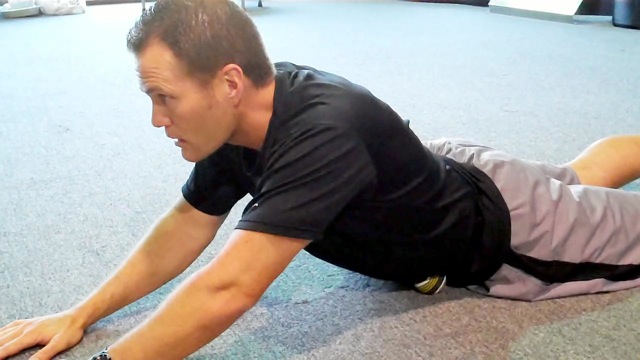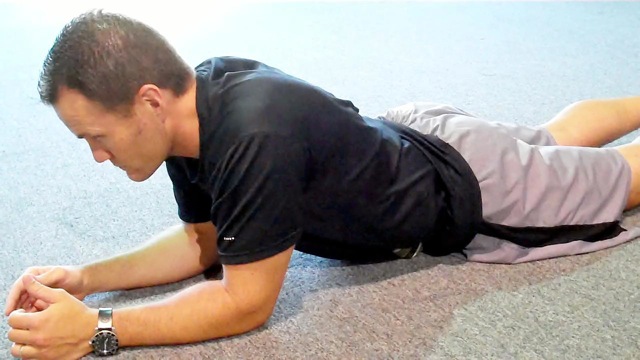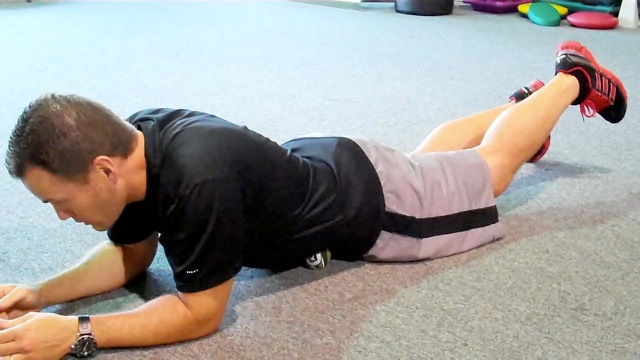
In the latest issue of Functionally Fit, Brian takes aim at the psoas muscle. This muscle can tighten up in runners, cyclists, swimmers and those who sit frequently during the day, leading to back pain, reduced breathing capacity and the possibility of injury. Here's an exercise you can teach your clients to use to loosen the muscle.
Execution:
The initial setup involves lying facedown on the ground on a level and firm surface. Place a small firm ball (I prefer the one made by TP Therapy) between the abdomen and the floor.
 |
 |
 |
To perform the manipulation, take a deep breath in and slowly elevate your body into a "cobra" type position while resting the bodyweight on the hands. Hold the position while taking several deep breaths (this will generally feel uncomfortable when tightness is present).
Return to the floor and lay flat. Next, rise back up and rest on the forearms/elbows while slowly pulling yourself forward to deepen the pressure as tolerated. For the deepest pressure, you can elect to lift the leg up on the same side of the body.
The entire process should take roughly two to four minutes on each side. Repeat on the other side as needed. Once you finish, stand and lift the knee up to assess the elasticity of the hip flex or on each side. You should feel a noticeable improvement with less tightness. I also find movement into hip extension should be more free.
Application:
The psoas muscle is an important structure since it connects the groin to the mid-back. When it is tight, it can increase anterior pelvic tilt and place undue stress on the lumbar vertebrae, as well as reducing breathing capacity. A common sign is an increased lumbar lordosis or apparent anteriorly tilted pelvis in the profile view. However, it cannot simply be assumed this is the sole reason for this posture, and a diagnosis should truly only be made by a healthcare practitioner.
With that said, it is common to see this muscle tighten up in runners, cyclists, swimmers and those who sit frequently during the day. I have also seen patients after hip arthroscopy develop some scarring and tightness in this region. Excessive spasm or tightness may lead to low backpain and potentially irritate the discs and nerves.
Excessive tightness can also impact the body during recreational activities and make it more prone to spinal compression and compensatory motion. While a release can be done manually by a massage therapist or physical therapist, I feel endurance athletes and those performing repetitive activities who suffer with hip tightness should learn to use a self-release technique routinely with a small trigger point ball to maximize mobility and reduce injury risk.
Additional notes:
Keep in mind this activity is not exactly pleasant and many people may object or dislike it. Be certain it is warranted and emphasize the reasons behind using the technique. It can be done manually by a trained medical practitioner, so be sure to clearly articulate to the client what the benefits are as well as the probable discomfort associated with the procedure.
Brian Schiff, PT, CSCS, is a licensed physical therapist, respected author and fitness professional. Currently, he serves as the supervisor at the Athletic Performance Center in Raleigh, NC. Brian presents nationally at several professional conferences and seminars on injury prevention, rehab and sport-specific training. For more cutting edge training information, subscribe to his monthly Training & Sports Medicine Update at www.BrianSchiff.com.















